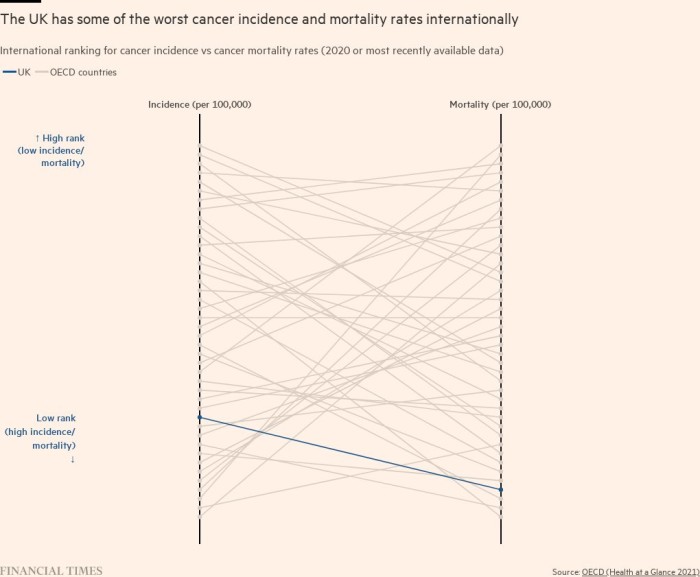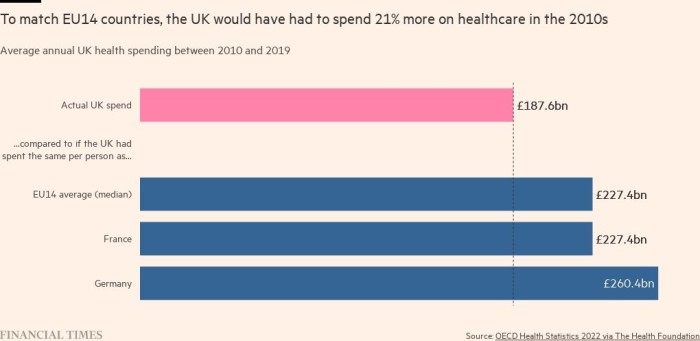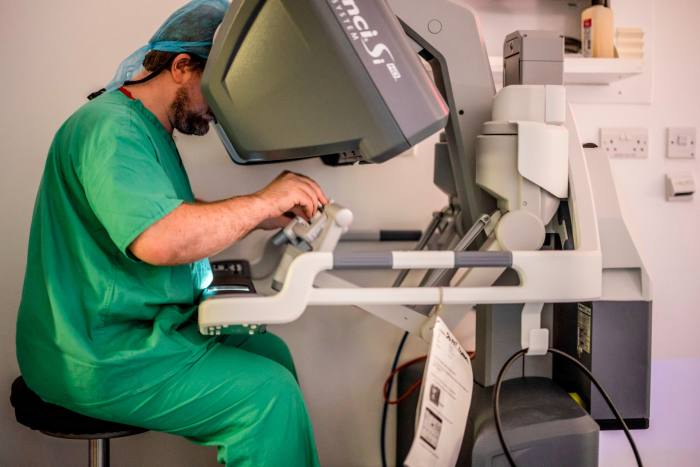When Kaloyan Kolev sought emergency help for an agonising middle-ear infection in November, it was the start of a 10-hour odyssey through the worst of Britain’s NHS.
After calling the NHS’s telephone advice line, 111, he was dispatched to an urgent treatment centre, only to learn that he faced a long wait. The 32-year-old, from Bury, Greater Manchester, decamped to a local hospital’s accident and emergency department, the pain so intense he could barely “speak, walk or sit”.
He was finally seen eight hours after arriving at A&E, leaving at 10am, only to discover that he had not received the results of his blood tests. That evening his ear drum perforated because of a build-up of fluid and he lost almost all hearing in it for a month and a half.
“I was frankly shocked how they treated someone complaining of extreme pain. I was left on my own for eight hours in the waiting room without anybody checking on me,” said Kolev, whose story is one of many shared with Healthwatch England, a statutory body that champions those who use health and care services.
There is scarcely a family or friendship group that could not muster a similar tale of woe. A system that once embodied an ultimate form of security, with its founding guarantee to “relieve your money worries in time of illness”, is itself seemingly on life support.
While some of the care the NHS produces is world class, Britons are among the unhealthiest people in Europe, with some of the highest obesity levels. Improvements in life expectancy in the decade after 2010 were the slowest in any rich country except the US.

Given such statistics, is Britain’s generations-long experiment in meeting the needs of a demanding developed nation almost entirely from its tax base sustainable for another 75 years without radical changes in the way it is organised and funded?
For many years, the notion that the NHS should no longer be funded from general taxation has been a recurring theme. But the voices urging a switch have become more persistent in recent months as the service’s demonstrable failings have made a more credible case for change.
Some politicians from the nation’s ruling Conservative party — including a former health secretary, Sajid Javid — have suggested a move to a social insurance system, the model adopted by many of the UK’s European neighbours in the postwar period. Employees contribute a portion of their income to fund their healthcare, matched by a contribution from their employer.
Cradle to grave: is Britain’s NHS broken?

The first part of our two-part series examines how a postwar commitment to provide free healthcare to all became a sacred part of British national identity, with soaring costs and declining outcomes.
Read part 1 here
The funding scheme is superficially attractive. High-income countries with social insurance are achieving better results than the UK on measures such as heart attack and cancer survival. But experts are wary of overplaying cause and effect, underlining how hard it is to divorce a health system from its cultural and economic context.
Nigel Edwards, chief executive of the Nuffield Trust, said that in theory it “might work perfectly well” and would have the advantage of diminishing the role of the Treasury and producing a less centralised healthcare system.
“But without the capacity some of the social insurance systems have got, and the culture in which they sit, there’s no magic ingredient that social insurance automatically produces better results,” he warned.
In addition, economically and in health terms, Britain is a far more unequal country than France or Germany, he pointed out, so has different health challenges.

Prof Sir Chris Ham, co-chair of the NHS Assembly, which advises NHS England, and a former director of strategy at the Department of Health, suggested that the method of raising funding for healthcare was not what mattered. “I think it’s the quantum of funding and the consistency of funding that makes the difference,” he said, referring to the boom and bust funding cycles to which the NHS has been subjected.
It is easy to point to the progressive loss of capacity during the past 30 years as the root of much of the NHS’s problems. Hospital bed numbers have more than halved over that period and the UK has fewer beds, scanners, doctors and nurses than similar nations, a situation worsened by the decade of austerity from 2010, the most sustained period of below-average funding growth in the NHS’s history.
The UK entered the pandemic at or near the bottom of a league table of comparable countries in relation to one- and five-year survival rates for multiple cancers, including those of the stomach, colon, rectum, pancreas and lung.
Yet the country has been unable to capitalise as it might otherwise have done on some of the extraordinary breakthroughs in cancer treatment of recent years, suggested Michelle Mitchell, chief executive of Cancer Research UK. She lamented “a failure to develop long-term workforce planning and capital funding for diagnostics in a golden era for cancer research when we should have been able to translate the brilliant research and science for patients more quickly”.

But expanding capacity will never be a long-term solution if demand continues to rise inexorably. Many experts believe that the single biggest imperative facing the system is to improve preventive care, forestalling conditions or treating them at an earlier stage before they require an expensive hospital admission.
The distribution of funding, especially over the past decade, has made this far harder. While under David Cameron the NHS received scant inflation-plus rises, funding in other crucial areas including disease prevention and social care was cut.
Experts believe it is this asymmetry that has done more than anything else to undermine the health service’s ability to meet the demands upon it — and it is here that change must come.
Ham said that since 2010, “we’re spending ever more on specialised acute hospital services, and the growth in spending on those services has outpaced very modest growth in spending on general practices, community nursing services, and of course, social care falls into that category too”.
A plan to tackle the crisis in urgent and emergency care, published on January 30, had displayed the same flawed approach, he said. It promised additional beds, ambulances and staff “but had hardly anything to say about how you can do something to moderate the demand for those services rather than just increasing the supply of those services”, he added.
This hospital-centric approach is evident in the way the workforce has developed over the past 15 years. Ben Zaranko, senior research economist at the Institute for Fiscal Studies who has studied NHS productivity, said that, while the number of hospital consultants had risen by more than half between 2009 and 2022, the number of general practitioners had flatlined. As the number of elderly people requiring care increased — in itself a tribute to an NHS that has kept them alive for longer — the size of the social care workforce actually shrank in England in the 2021-2022 financial year.
“We’ve become increasingly focused on the secondary, curative sector,” he said. “Imagine a world 15 years ago in which we hadn’t decided to squeeze public health, social care and district nursing, then maybe hospitals wouldn’t be in this position.”
One way of easing pressure on secondary care may be to recruit more managers. Contrary to the popular narrative of a bloated NHS bureaucracy, the health service has the lowest administrative costs among comparable health systems: just 2p in every pound. Experts say that compared not just with similar health systems but with other industries of a comparable size, the health service is notably undermanaged.
Zaranko noted that good managers freed up doctors’ time by running the system more efficiently — improving staff management; liaising better with GPs or easing the transfer of patients into the care system to free up frontline capacity in hospitals.
“I don’t doubt that saying ‘we’re going to have x many more docs and y many more nurses’ sounds better than ‘we’re going to improve the management structures of the NHS’ but by making short-term decisions, you can create long-term problems,” he said.
One way of altering the health system’s centre of gravity, providing care proactively and closer to people’s homes, may be to make better use of data and technology. Here, again, investment decisions have failed to support an approach that has proved demonstrably effective in other countries.
Anita Charlesworth, director of research at the Health Foundation, said: “We have not invested systematically in the infrastructure of data and analysis to really maximise the opportunities that a National Health Service should provide.”

Data should be used to identify people at risk and provide earlier intervention “but we’ve had totally false starts at a comprehensive IT and data strategy for the NHS and have not capitalised on the potential there”, she said.
Part of this reflected the UK’s “anti-managerial culture, the idea is that the only people who are really valuable in the care system are the people providing frontline care. So investing in things like data scientists who can help to guide and support this sort of work is seen as bureaucratic waste, rather than part of the 21st century healthcare team”.
Other countries have done this far more effectively and are reaping the rewards in more co-ordinated care and lower hospital admissions.
Denmark’s hospital system only has two electronic health record (EHR) systems — reduced from 13 originally — which are nationally integrated with GP systems, so that individual health accounts carry a complete record of patient treatment and activity. Danes are expected to accept digital communications unless exempted.
Dr Jørgen Kristensen, the chief executive of Denmark’s Central Jutland healthcare region who has worked on the digital transformation for more than 20 years, said the approach sped up discharge processes and cut the length of hospital stays by allowing doctors to communicate seamlessly with GPs and municipal social care systems. The latter must take patients or face paying fees to keep them in hospital that exceed the cost of caring for them in the community.
Looking further over the horizon, the NHS is seeking to harness the power of artificial intelligence in order to improve diagnosis and ultimately reduce burdens on the system. The government has run a £140mn “AI in Health and Care” award scheme to spur development of technologies with game-changing potential.
Award winners have included companies such as Caristo, which uses AI to analyse vascular inflammation in heart CAT scans, of which the NHS carries out nearly 200,000 a year, in order to identify potential heart attack victims up to seven years in advance.
Such technologies could not only save the NHS money on acute treatment, but by identifying and reaching potential future patients and prescribing them preventive treatments — from statins to a better exercise regime — they could keep people healthy and economically productive for longer.
Richard Sloggett, a health policy expert, argues that if this agenda is to be realised, however, it will require the Treasury to cease viewing health spending as a “sunk cost” and reframe it as an investment that may not deliver for years but will ultimately boost the economy by producing a healthier workforce.
Although new ways of working are vital, experts say that, ultimately, the NHS simply needs more cash. While the UK spends above the OECD average on healthcare as a share of GDP, a study by the Health Foundation in November showed that it had spent about 20 per cent less per person on health each year than similar European countries over the past decade.
“It’s not because they’ve got social insurance or we have taxation. It’s because of the choices that their politicians and their governments have made,” Ham said.

Ham believes that politicians have fundamentally failed by not acting sooner to tackle the NHS crisis, revealing a key flaw in the UK’s political culture. After the first few years of austerity, the price being paid by the health service in longer waiting times and growing deficits was clear.
“So this is what the political system ought to be capable of responding to and acting on. And yet the coalition government and the Conservative government under various leaders has signally failed to do that.”
Nor does he spare the Labour party. “I don’t think it emerges particularly well either because back in the 2015 general election it wasn’t making promises to address the NHS funding shortfall by increasing the budget because it was still in that phase where it wanted to be able to demonstrate to the public it was responsible with the public finances.
“So I see what’s happened as a failure of the political system as much as a failure of the NHS,” he added.
Given that the squeeze on the rest of Whitehall is probably at its limit, many believe new forms of revenue will need to be found if the sums going to the NHS are to increase.
For Prof Sir Michael Marmot, a health inequalities expert, the answer is higher taxes. “We have among the lowest tax rates in Europe . . . If we raised our level of taxation up to the average for OECD countries it would mean the tax take would go up by about 1 per cent of GDP. That could be done relatively painlessly,” he said.
Under pressure from his party to ease the tax burden further before the general election expected next year, Rishi Sunak, the UK’s Conservative prime minister, is unlikely to be swayed by such logic.

But Sloggett, who was a political adviser to Matt Hancock, former Conservative health secretary, believes a reckoning is long overdue over whether Britons are prepared to pay more for the NHS — at least in the short term — or accept some constraint on what the NHS will offer free of charge.
It is a debate that conspicuously failed to happen at the most recent general election in 2019, he said, drowned out by Boris Johnson’s promise of 40 new hospitals and Jeremy Corbyn’s insistence that the NHS would be on the table in trade talks with then US president Donald Trump.
“Is it any wonder that four years down the line we’ve got strikes, we’ve got waiting lists because we haven’t had the fundamental discussion about what we’re investing in.”
Sloggett believes there is no public appetite to change the NHS model but keeping faith with Aneurin Bevan’s concept means that big, testing questions can no longer be ducked.
“If you believe in ‘free at the point of use’, how are we going to pay for it and who pays what? The NHS will survive but what [services] will be included in that survival? In 2024, those are the conversations we have to have.”
Stay connected with us on social media platform for instant update click here to join our Twitter, & Facebook
We are now on Telegram. Click here to join our channel (@TechiUpdate) and stay updated with the latest Technology headlines.
For all the latest Health & Fitness News Click Here


